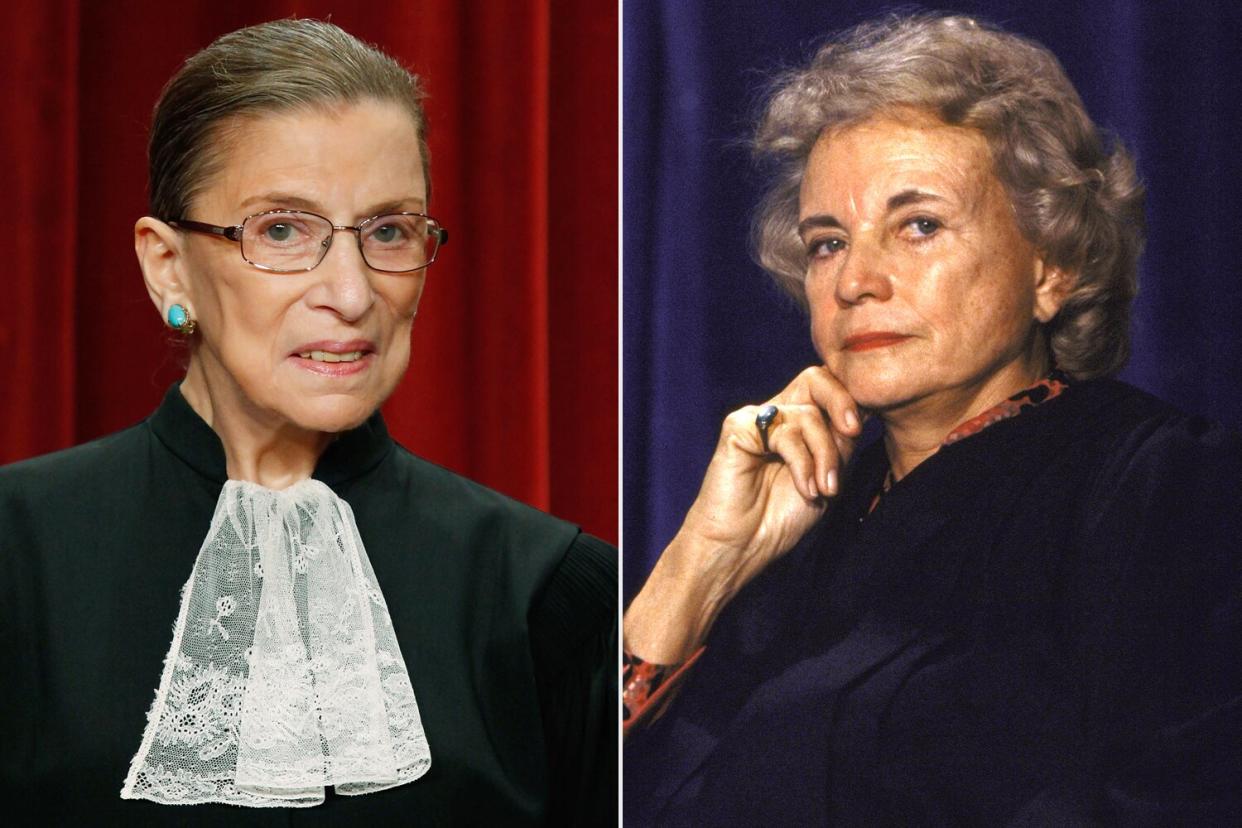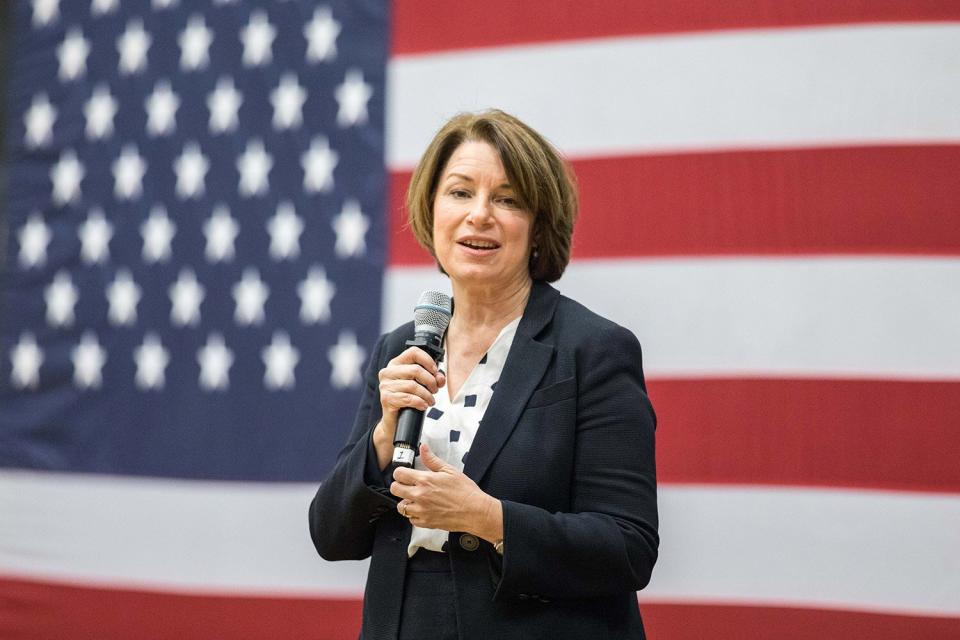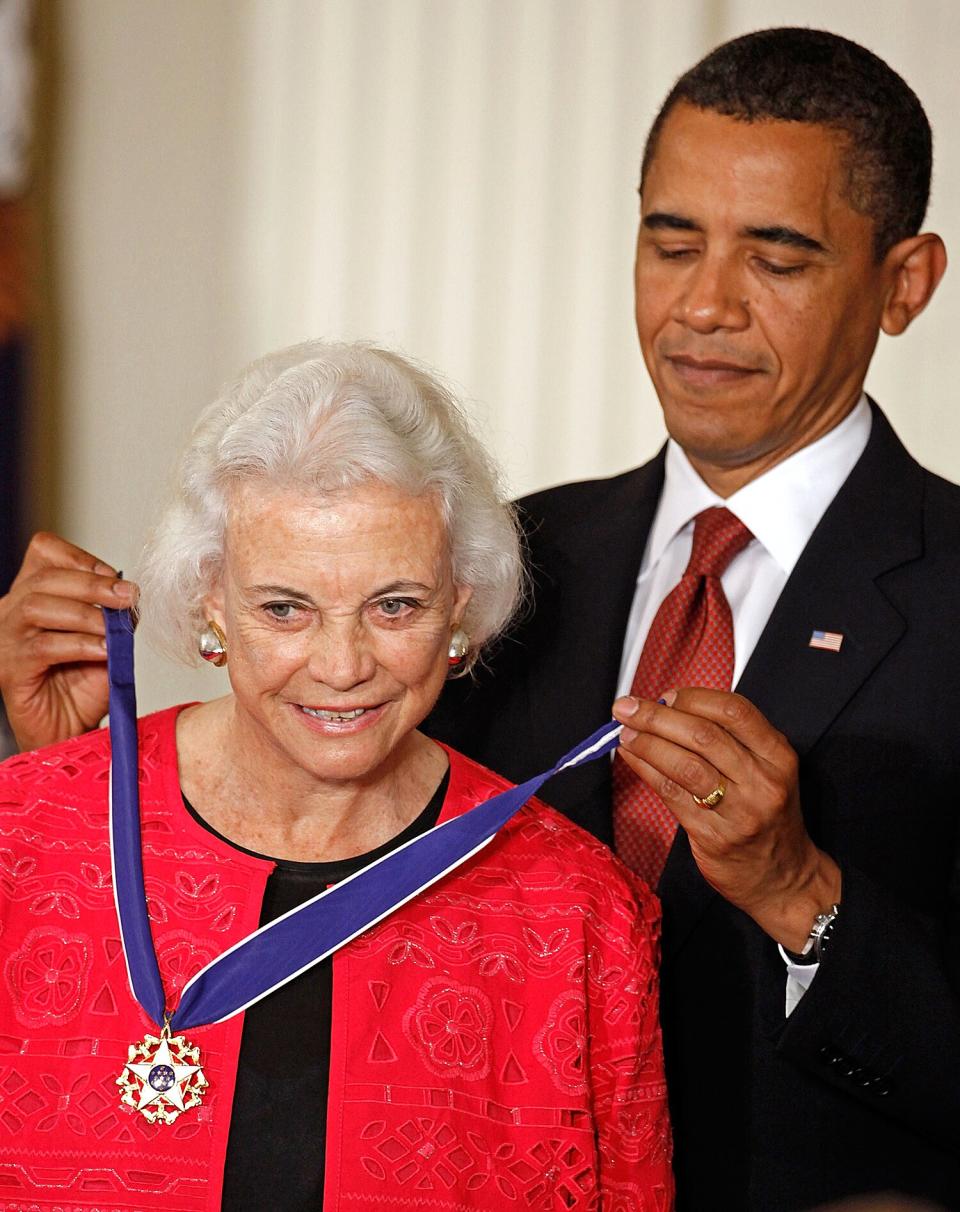Statues of Justices Ginsburg and O'Connor to Diversify Capitol Collection That Mostly Depicts 'Bunch of Guys'

- Oops!Something went wrong.Please try again later.
- Oops!Something went wrong.Please try again later.
- Oops!Something went wrong.Please try again later.
- Oops!Something went wrong.Please try again later.
Mark Wilson/Getty; Diana Walker/Getty
Trailblazing Supreme Court Justices Ruth Bader Ginsburg and Sandra Day O'Connor will be honored with statues inside the U.S. Capitol or on its grounds thanks to the efforts of lawmakers who sent a bipartisan bill to President Joe Biden to sign in April.
On Thursday, Sen. Amy Klobuchar — who sponsored the legislation with Republican Sens. Lisa Murkowski and Susan Collins as well as fellow Democrat Kyrsten Sinema — joined House Speaker Nancy Pelosi and Rep. Lois Frankel, co-chair of the Democratic Women's Caucus, outside the Capitol to celebrate with people close to the justices.
"I salute you and the other senators," Pelosi said, after being introduced by Klobuchar. The speaker added that her colleague Rep. Frankel was "relentless and persistent" in pushing the bill through both towards the president's desk.
"One of our goals in our caucus and working in a bipartisan way was to have more diversity in the Congress," Pelosi said.
She mentioned progress already achieved by placing statues of civil rights activist Rosa Parks and abolitionist and women's rights activist Sojourner Truth in building but said the plan to honor "two women who are so courageous and so competent" is a bit different.
RELATED: Justice Clarence Thomas Recalls RBG's 'Strength and Perseverance' In Touching New Remembrance Letter
Their contributions, Pelosi said, are "something that people know very well, have seen in their lifetime."
Klobuchar reiterated Pelosi's comments on diversity. The halls of Congress are "full of statues that depict so many Americans that, yes, helped shape our Republic but those fortunate enough to spend time in the Capitol quickly notice that it's a whole bunch of guys," she said, before adding a bit of trivia to prove her point: "Of more than 200 statues in the Capitol, only 14 feature women."

Justice O'Connor's eldest son, Scott O'Connor, and Prof. Kelsi Corkran, a former clerk for Justice Ginsburg, were also on hand to mark the occasion.
"I had so much fun calling Scott to tell him that we got this done," Klobuchar said. "I don't think people ever believe that we actually pass bills, but we do."
Scott O'Connor said he and the family are "delighted that mom is sharing the honor with Ruth Bader Ginsburg, her colleague, and her family."
RELATED: Ruth Bader Ginsburg's Granddaughter Reflects on 'Shopping in Bubbie's Closet' in Powerful Essay
"Mom and Justice Ginsburg worked together in friendship and mutual respect, even when they found themselves on opposite sides of cases before the court. They're role models for how government leaders should work together to solve our nation's problems," he continued, before offering a suggestion. "Perhaps as the statue project takes shape, the two of them might be cast to stand together."
O'Connor, 92, was the first woman to become a Supreme Court justice. Nominated by President Ronald Reagan — who fulfilled his pledge to appoint a woman to the court during his 1980 presidential campaign — O'Connor served from 1981 until 2006, when she retired in part to take care of her husband, attorney John O'Connor III, who had been diagnosed with Alzheimer's disease.

Chip Somodevilla/Getty Images
In 2018, O'Connor announced in a letter that she had been diagnosed with the "beginning stages of dementia, probably Alzheimer's disease."
Her son told the small crowd gather in front of the Capitol that his mother has not been depressed through her ordeal. "It's a blessing," he said. "She's in very good spirits and happy to see close friends and family for visits."
RELATED: Sandra Day O'Connor Once Rejected a Marriage Proposal from Late Chief Justice William Rehnquist
The second woman to join the high court was Ginsburg, who was nominated by President Bill Clinton and served from 1993 until her death in Sept. 2020, due to complications of metastatic cancer. She was 87.
Ginsburg, a beloved liberal icon who became a popular figure in reaches of American culture that extend far beyond judicial circles, was previously honored with a statue in her hometown of Brooklyn, N.Y., last year.

Nikki Kahn/The Washington Post via Getty Images
Prof. Corkran read a statement written by Ginsburg's granddaughter Clara Spera, which said the family is "deeply honored to help mark the grand occasion of the announcement of statues in honor of our grandmother and mother … and of her friend and colleague."
In the statement the former clerk read, Spera praised the bipartisan legislation as a start to addressing the imbalance in represented leaders depicted in National Statuary Hall.
Corkan also recalled a meme inspired the justice that said, "You can't spell 'truth' without Ruth."
"I've always loved that meme because I think it sums up her legacy so well," Corkan said.
In announcing the new law that green-lights the creation of new statues in Ginsburg and O'Conner's likenesses, Klobuchar spoke about the significance of placing monuments to the first women justices on the grounds of the Capitol.
"The Capitol is our most recognizable symbol of democracy, a place where people from across our country have their voices represented and heard," she said in a statement last month. "It is only fitting that we honor their remarkable lives and service to our country by establishing statues in the Capitol."
In honor of the justice's legacies, the newly passed legislation requires the consideration of artists from underrepresented demographic groups to be commission to sculpt the Capitol collection's newest additions.

